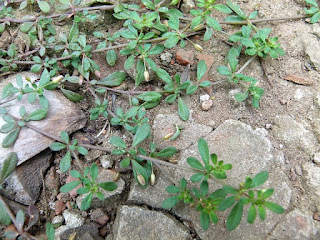(Gynura scandens O.Hoffm.)

Gynura scandens O.Hoffm. is an all green slightly velvety variety. Commonly known as Okinawa Spinach is one of the most treasures herb among Hmong people and its community. This herbs is used in many Hmong traditional dishes. It is also used in conjunction with other herbs to aid mom with new birth in a 30 days postpartum regimen. In the USA, It is a must have herb in backyard growing of very Hmong household and community. This variation of Gynura species overall feels, looks, growths habits, environmental needs are the same. From my personal experience, I believe G. Scandens is closely related to G. Crepioides. Both are covered with fine fuzzy hairs and feel somewhat velvety. Native to China, Vietnam, Laos, Thailand, Myanmar, and neighboring countries. Cultivate in many other countries for its culinary and medicinal value. Tender leaves and shoots is harvested and eaten raw or cooked. It is rich iron, calcium, potassium, and vitamin...



